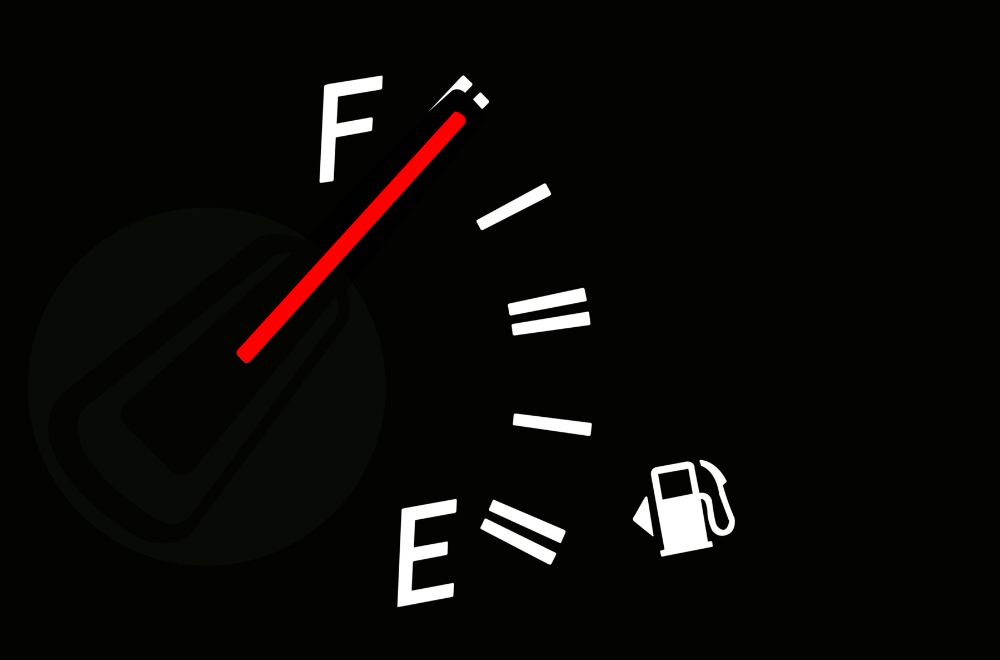With rising fuel prices and increasing awareness about environmental impact, maximizing fuel efficiency is more important than ever. Whether you’re on a road trip, a business trip, or simply exploring a new area, using less fuel not only saves money but also reduces your carbon footprint. While car rental services like SNA Auto Rental offer fuel-efficient vehicles, driving habits and car maintenance play a significant role in how far you can stretch a gallon. Here’s a comprehensive guide on how you can maximize fuel efficiency in your rental car.
Choose the Right Car for Fuel Efficiency
When renting a car, the vehicle type you choose has a direct impact on fuel efficiency. Here are some factors to consider:
- Compact and Economy Cars: Smaller cars generally have better fuel economy than larger ones. Compact and economy vehicles are ideal for city driving and short trips, consuming less fuel than SUVs or trucks. If you don’t need a large vehicle for passengers or cargo, opting for a smaller, more efficient car can lead to substantial savings on fuel.
- Hybrid and Electric Vehicles: Many rental companies, including SNA Auto Rental, offer hybrid or electric vehicle options. Hybrids combine fuel with battery power to reduce fuel consumption, making them an excellent choice for both city and highway driving. Electric vehicles (EVs) can eliminate fuel costs altogether, though they require charging infrastructure. If you’re traveling in areas with plenty of charging stations, EVs can be a smart, eco-friendly choice.
- Avoid Overpowered Vehicles: While it can be tempting to rent a car with a high-powered engine, choosing a vehicle that’s too powerful for your needs results in wasted fuel. A smaller engine typically consumes less fuel than a larger one, so select a vehicle that aligns with the type of driving you’ll be doing.
 Optimize Your Driving Habits
Optimize Your Driving Habits
The way you drive significantly influences fuel efficiency. By practicing mindful driving techniques, you can make the most out of every tank:
- Maintain Steady Speeds: Rapid acceleration and hard braking are two of the biggest fuel wasters. Instead, aim to accelerate and decelerate gradually. Maintaining a consistent speed, especially on highways, can lead to noticeable fuel savings. For instance, driving at a steady speed of 65 mph can be more efficient than fluctuating between 55 mph and 75 mph.
- Use Cruise Control on Highways: Cruise control helps maintain a steady speed, reducing the likelihood of unnecessary speed changes. This is particularly helpful on long highway stretches where frequent speed adjustments waste fuel.
- Limit Idle Time: Idling for extended periods uses up fuel without moving the car, making it one of the most inefficient ways to consume gasoline. If you’re waiting in the car for more than a minute, it’s more fuel-efficient to turn off the engine and restart when ready to go.
- Avoid Heavy Acceleration: Flooring the gas pedal might get you to your destination faster, but it consumes significantly more fuel. Smooth and gradual acceleration consumes less fuel and is gentler on the vehicle’s engine.
- Drive Slower: As a general rule, fuel efficiency decreases at higher speeds. Once you pass 50 mph, each 5 mph increase reduces fuel economy. Driving at moderate speeds, particularly on highways, is one of the easiest ways to save fuel.
Keep the Car Well-Maintained
Proper maintenance is essential for fuel efficiency. Well-maintained cars perform better and use less fuel, so follow these tips to ensure your rental is in optimal condition:
- Tire Inflation: Underinflated tires increase resistance between the tires and the road, forcing the engine to work harder and use more fuel. Before hitting the road, check the tire pressure and ensure they’re inflated to the recommended level. Rental companies typically maintain tire pressure, but it’s always wise to check, especially before a long trip.
- Check Fluid Levels and Air Filters: Clean oil and an unclogged air filter contribute to smoother engine performance. Dirty oil or a clogged air filter makes the engine work harder, burning more fuel. Many rental agencies, like SNA Auto Rental, ensure their vehicles are well-maintained, but you can always double-check with the rental office before starting your trip.
- Regular Tune-Ups: A vehicle in peak condition is more fuel-efficient than one that’s overdue for a tune-up. If you’re renting a car for an extended period, inquire about maintenance records to ensure everything is in order. Well-maintained vehicles typically deliver better gas mileage and are more reliable.
Smart Route Planning
Strategically planning your route can save you time, reduce fuel consumption, and make your journey more enjoyable.
- Use GPS or Map Apps to Avoid Traffic: Modern GPS and navigation apps like Google Maps and Waze provide real-time traffic updates, allowing you to bypass congested routes. Avoiding heavy traffic minimizes stop-and-go driving, which burns more fuel than steady highway driving.
- Combine Trips and Errands: Instead of making multiple short trips from your base location, try to combine errands into one trip. Starting the engine consumes more fuel, so reducing the number of starts can improve fuel efficiency.
- Avoid High Traffic Times: If you can, schedule your travel during off-peak hours. Driving during low-traffic times allows you to maintain consistent speeds, reducing the need for frequent stops and starts, which helps conserve fuel.
- Use Alternative Routes: Sometimes, taking a longer, less congested route is more fuel-efficient than sitting in stop-and-go traffic. Even if an alternative route is a bit longer, a smoother drive can lead to better fuel economy.
Use Air Conditioning Wisely
Air conditioning can have a significant impact on fuel consumption, so using it wisely is essential for fuel efficiency.
- Air Conditioning vs. Windows Down: At high speeds, rolling down the windows creates drag and reduces fuel efficiency, making air conditioning a better option. Conversely, at low speeds, turning off the AC and using windows is more efficient since there’s less aerodynamic drag.
- Set Temperatures Moderately: Using air conditioning at moderate temperatures is more efficient than constantly lowering the temperature. The lower the temperature setting, the harder the AC system works, which requires more fuel.
- Use Ventilation: In cooler weather, take advantage of your vehicle’s ventilation system. By drawing in fresh air without using the AC compressor, you can reduce fuel consumption while keeping the cabin comfortable.
Reduce Excess Weight and Drag
Extra weight in the vehicle increases the engine load, which translates to more fuel usage. Likewise, aerodynamic drag can affect fuel economy, especially at higher speeds.
- Remove Unnecessary Items: Don’t use your rental as a storage space for heavy or unnecessary items. The lighter the vehicle, the less fuel it consumes. Avoid packing items you won’t need during your trip.
- Avoid Roof Racks if Possible: Roof racks and carriers increase aerodynamic drag, which decreases fuel efficiency. If you’re not using the roof rack, ask the rental company to remove it before you hit the road. Alternatively, choose a rental car without one if you don’t need extra storage space.
Maximize Efficiency with Technology
Today’s rental cars often come equipped with helpful technology that can further enhance fuel economy.
- Eco-Mode: Many modern vehicles have an Eco-mode setting that adjusts the engine and transmission for fuel-efficient driving. If your rental car has this feature, consider using it for optimal gas mileage.
- Onboard Fuel Efficiency Monitor: Some cars come with a fuel economy display that shows your current miles per gallon (MPG) rate. Use this feature to monitor your driving habits and adjust them for better fuel efficiency.
- Use Automatic Stop-Start if Available: Some rental cars come with stop-start systems that automatically turn off the engine when idling (like at traffic lights) and restart it when you press the gas pedal. This feature can save fuel, especially in heavy traffic or during frequent stops.
Driving Styles to Avoid for Better Fuel Economy
Certain driving styles are fuel-hungry, so it’s best to steer clear of them whenever possible.
Aggressive Driving: Speeding, rapid acceleration, and abrupt braking waste gas and reduce mileage by as much as 15-30% on highways and 10-40% in city driving. Keep a calm, steady approach behind the wheel to maximize fuel efficiency.
Frequent Short Trips: Engines are less efficient when cold, so avoid taking multiple short trips that don’t allow the engine to warm up. Instead, try to run all errands in a single trip whenever possible.
Driving in Lower Gears: When driving a manual, avoid staying in low gears longer than necessary, as this consumes more fuel. Shift up to higher gears as soon as it’s practical to reduce fuel consumption.
SNA Auto Rental and Fuel-Efficient Options
Maximizing fuel efficiency in your rental car is easy with the right approach. By selecting a fuel-efficient vehicle, driving mindfully, maintaining your car, and using onboard technology, you can make a noticeable impact on your fuel savings. Small changes in your driving habits and route planning can lead to meaningful fuel conservation and cost reduction.
SNA Auto Rental is committed to helping renters make eco-friendly choices by offering a wide selection of fuel-efficient vehicles. Additionally, SNA Auto Rental offers electric cars for rent. These cars are well-maintained to ensure peak performance and fuel efficiency, giving you peace of mind that you’re getting the most out of every mile.
The knowledgeable team at SNA Auto Rental can help you find the best fuel-efficient vehicle and offer tips on maximizing gas mileage.



